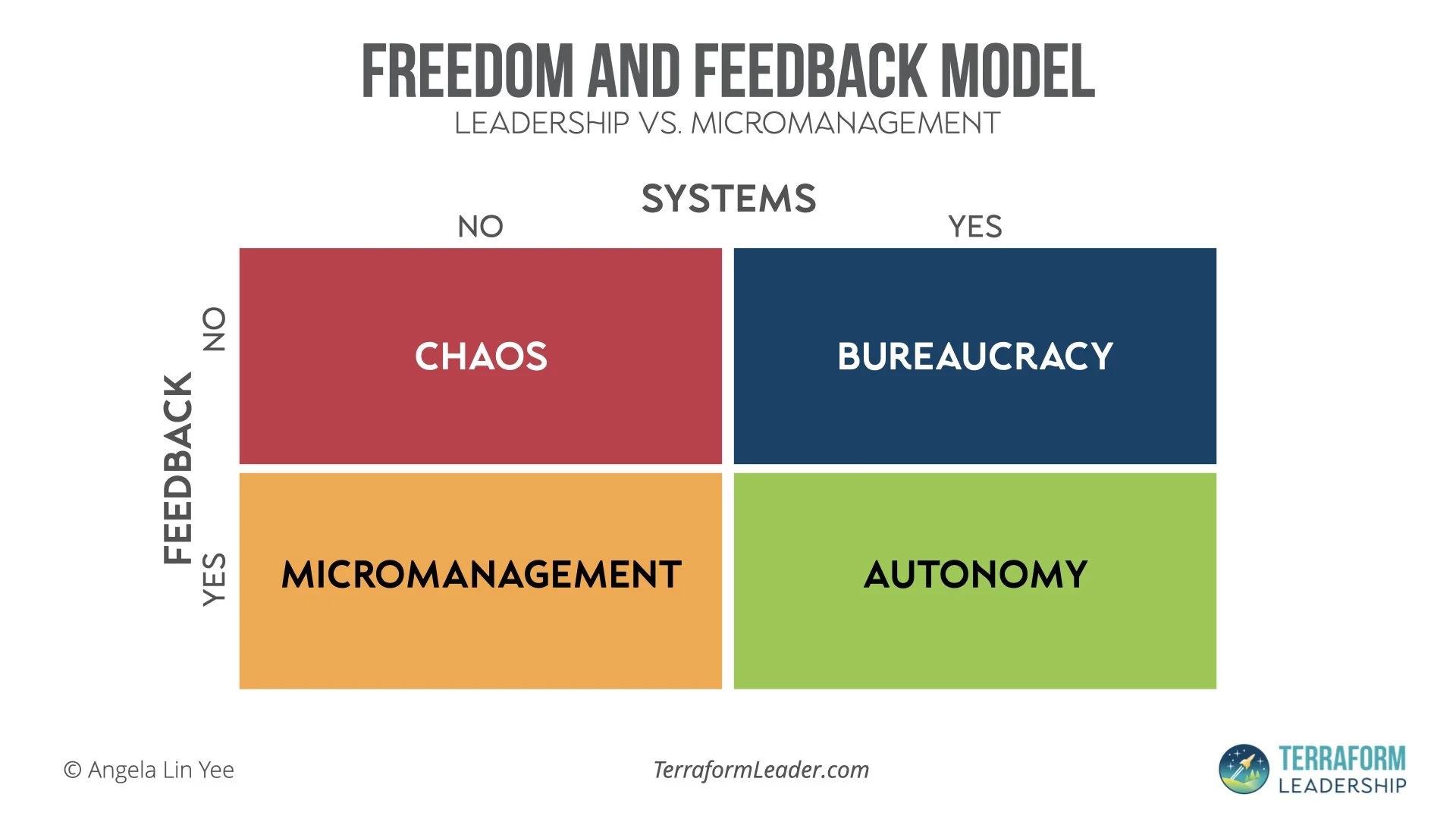Leadership Systems vs. Micromanagement: What’s the Difference?
Building Leadership Systems That Scale • Part 3
Have you ever felt like you’re walking a tightrope between keeping your team accountable and avoiding being a micromanager?
Some leaders struggle to strike a balance between clarity and control, and the wrong approach can leave your team feeling drained instead of empowered.
The difference between Leadership and micromanagement
Leaders know that accountability matters. The problem comes when accountability turns into control.
Leadership systems are designed to clarify priorities, simplify steps, and support people to do their best work. These might include project workflows, weekly team meetings, or decision-making filters.
Micromanaging systems, on the other hand, pile on unnecessary oversight. Endless sign-offs, redundant reports, or constant time tracking signal one thing to your team: you don’t trust them. Instead of supporting, these systems create clutter, centralize decisions, and make people dependent on you for every next step.
Freedom and feedback: the model for healthy systems
The key to leading well lies in balancing freedom and feedback. Think of it as a grid with two axes: systems or no systems, and feedback or no feedback.
With neither, you get chaos.
With systems but no feedback, you get bureaucracy.
With feedback but no systems, you get micromanagement.
The best place to be is both systems and feedback. This combination provides clarity and growth, creating autonomy.
Systems give your team structure and ownership, while feedback ensures learning and improvement. People can flourish when they know what to do and have the space to do it, while still receiving coaching to grow stronger.
What accountability looks like in practice
Poor accountability often looks like daily check-ins where the leader assigns every task, corrects every step, and acts as the team’s bottleneck.
The right system flips that dynamic. The team owns the process, understands the goals, and has guidelines for how to get there. They check in with you when they need support or hit roadblocks beyond their scope.
In this environment, seasoned employees thrive. They don’t need you telling them how to do their job — they need clarity on outcomes and space to deliver. Newer team members might need more direction at first, but the goal is always to move them toward greater autonomy.
Moving from control to empowerment
The bottom line is simple: leadership systems empower, while micromanagement controls.
Healthy systems create clarity, trust, and accountability, while micromanagement results in clutter, dependency, and low morale.
If you want to scale your team or organization, focus on building systems that lighten your leadership load and give your team the freedom to excel.
Don’t miss future articles from this series!
If this article interested you, don’t miss the upcoming articles for the rest of the series in how to establish a consistent leadership operating system.
Each one dives deeper into the building blocks of a healthy leadership operating system. You’ll get practical, actionable ideas you can apply whether you’re leading a small team or an entire organization.
When you subscribe to my email list, you’ll receive a quick note whenever a new video and article go live.
Subscribe below to get the next video delivered straight to your inbox!





